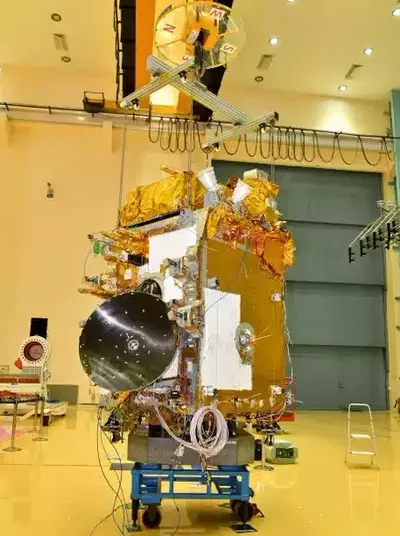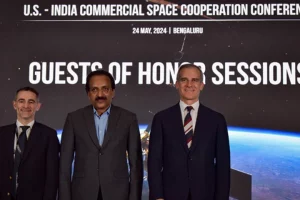After the successful landing of Chandrayaan-3 mission on the Moon, ISRO is now going ahead with its plan to launch Aditya L1, India’s first space-based laboratory to study the Sun, in the first week of next month.
“Aditya L1’s mission to study the Sun will be launched soon. We’re planning to launch it in the first week of September. Everything is going as per the plan. This launch will go to an elliptical orbit and from that it will travel to the L1 point which will almost take 120 days,” ISRO chief S Somanath said at a press conference in Bengaluru.
ISRO had announced on August 14 that the satellite has arrived at its Sriharikota launch pad in Andhra Pradesh.
The spacecraft will placed around the Lagrange point 1 (L1) of the Sun-Earth system, which is about 1.5 million kilometres from the Earth.
“A satellite placed around the L1 point has a major advantage of continuously viewing the Sun without any eclipses. This will provide a greater advantage of observing the solar activities and its effect on space weather in real time,” ISRO said.
Aditya L1 will look at the Sun continuously hence it can forewarn scientists of imminent solar electro-magnetic effects on Earth. This will help protect our satellites, and other power electrical and communications networks from getting disrupted and help continuing normal operations by operating them in safe mode, till the solar storm blows over.
The main scientific goals of the Aditya-L1 mission include studying the dynamics of the Sun’s upper atmosphere, including the chromosphere and corona, investigating chromospheric and coronal heating, the physics of partially ionised plasma, and the initiation of coronal mass ejections and flares.
Isro will also study the magnetic field topology and measurements in the solar corona, and investigate the drivers for space weather, including the origin, composition, and dynamics of the solar wind.
Aditya-L1 will be equipped with seven payloads. Four of these will remotely sense the Sun, focusing primarily on the chromosphere and corona. The other three will conduct in-situ observations.
Also read: Chandrayaan-3’s Pragyan Rover rolls out of Vikram to scour surface of Moon




















